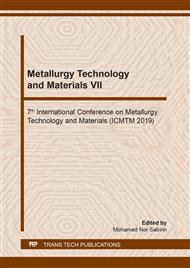p.161
p.167
p.175
p.181
p.186
p.197
p.202
p.208
p.214
Thermal Performance Simulation of the Metal Foam Heat Sink
Abstract:
This study investigated the sintered metal among the regular finned heat sink. And a metal foam heat sink for power module cooling is designed. An improved computational model for effective thermal conductivity was obtained. Contrast to the two types of the heat sink, it is found that under the condition of the constant heat flow density, the heat accumulated is absent in metal foam heat sink. Meanwhile, the heat transfer coefficient of the metal foam heat sink is 3.6 times that of the finned heat sink of equivalent geometric parameter. At the same drop pressure, the air velocity of the metal foam heat sink is lower than that of the finned heat sink. The velocity of air in the foam radiator is lower than that in the finned radiator. Under the same fan power, the gain factor of the four finned metal foam radiators is about 20 times higher than that of the ribbed radiators of the same conditions.
Info:
Periodical:
Pages:
208-213
Citation:
Online since:
October 2019
Authors:
Keywords:
Price:
Сopyright:
© 2019 Trans Tech Publications Ltd. All Rights Reserved
Share:
Citation:


